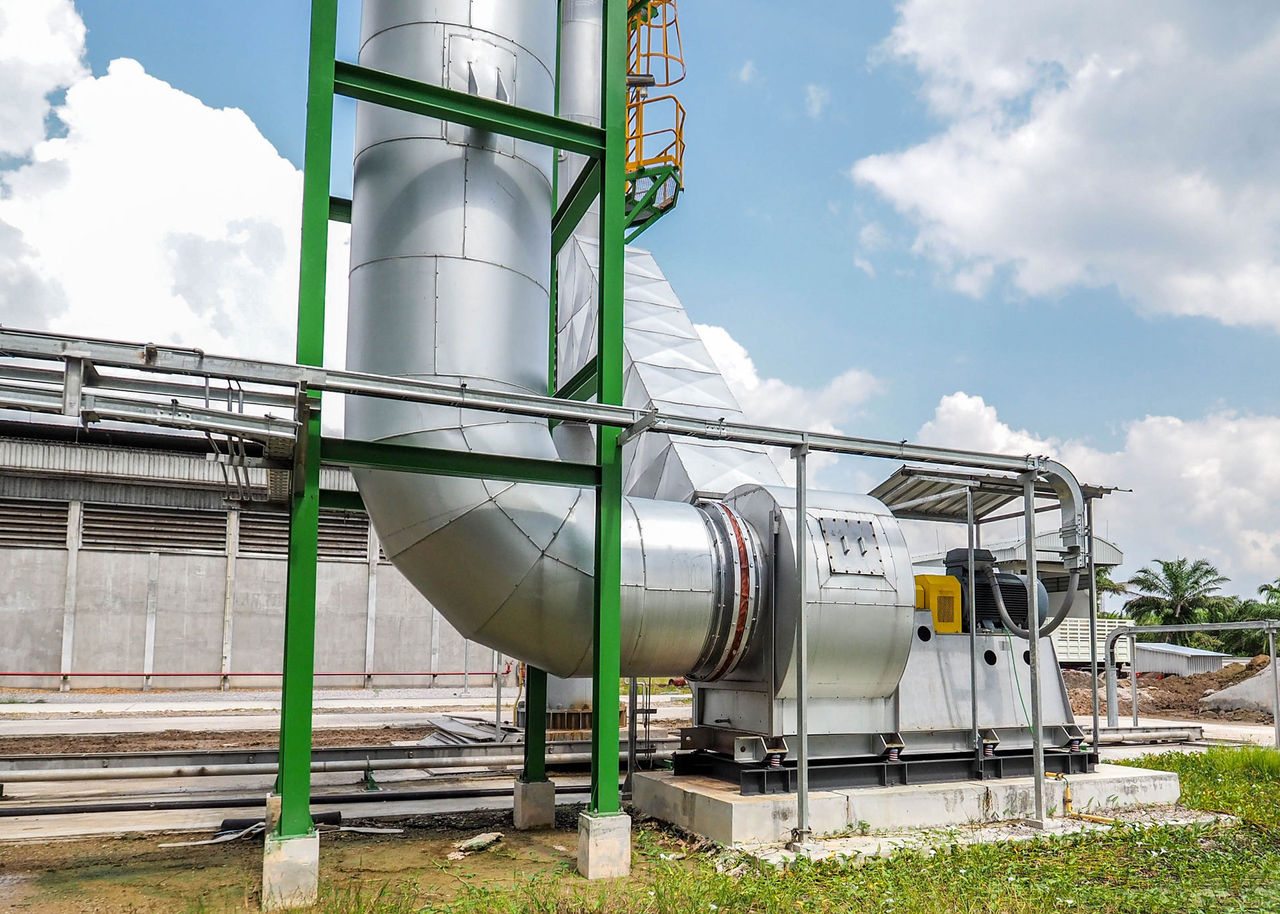In this article
Precision Overhaul: Rebalancing the Fan That Keeps Surrey’s Waste Moving

Industry Sector:
Renewable Energy /
Waste Management
Application:
Induced Draft Fan
Problem
At an energy-from-waste (EfW0 site in Surrey, over 62,000 tonnes of household waste processed every year -generating enough low carbon electricity to power more than 8,000 homes. Operating under a long-term agreement with the local authority, the site plays a vital role in the county’s sustainable waste strategy.
At the centre of this process is one crucial component: the Induced Draft (ID) fan. With a two-metre diameter impeller and a high-mounted heavy-duty motor, the ID fan is responsible for drawing combustion gases through the incineration process. It’s not just important – it’s indispensable. There’s no backup. If the fan stops, the entire facility comes to a standstill.
Challenge
That risk became real last year when routine reliability checks picked up rising vibration and noise levels. Early signs of bearing degradation were also identified. While previous balancing attempts had offered temporary relief, they hadn’t addressed the root cause of the issue.
To make matter worse, the original fan assembly used imperial-dimensioned components – parts that could only be sourced from overseas. With lead times stretching up to six weeks, waiting wasn’t an option. The site needed a lasting solution, delivered quickly and efficiently during their limited September shutdown window. That’s when they turned to ERIKS.
Solution
Rather than simply replace what was broken, ERIKS took a longer-term view – and delivered a solution that not only resolved the immediate issue but significantly improved reliability and serviceability for the future.
The original shaft was removed and transported to ERIKS’ engineering centre in Southampton, where it was precision-machined to metric dimensions. This upgrade allowed the use of readily available, locally stocked parts — eliminating reliance on long overseas shipments and dramatically reducing future lead times.
Back on site, high-performance SKF bearings were installed using advanced laser alignment tools. The bearings were mounted with pre-calculated shim packs to ensure perfect height and flawless alignment from the outset. Lubrication was carefully applied under controlled conditions to ensure maximum performance from day one.
ERIKS also redesigned the bearing assembly to simplify maintenance. Previously, replacing the bearings required full shaft removal — a time-consuming task that could take an entire day and involve heavy lifting. With the new design, removable bearing caps mean future bearing changes can be completed in just 90 minutes, with no need for major teardown or lifting equipment.
To avoid any delays in the future, ERIKS now holds critical SKF bearings in optimal storage conditions onsite — fully traceable, factory-fresh, and ready for immediate use when needed. There’s no more waiting six weeks for a transatlantic shipment.
Results
This was the first time the site had outsourced such a large, standalone engineering project, and ERIKS delivered. The benefits were clear and immediate. Vibration levels dropped significantly, improving safety, stability, and performance. Noise levels also fell noticeably, creating a better working environment for onsite teams. Maintenance is now faster and safer, with no need to dismantle major components. And thanks to improved alignment and lubrication practices, the ID fan is expected to run reliably with minimal intervention.
Sign-up for Support for your Industry:
A Infrastructure Team member will review your enquiry and respond promptly.
